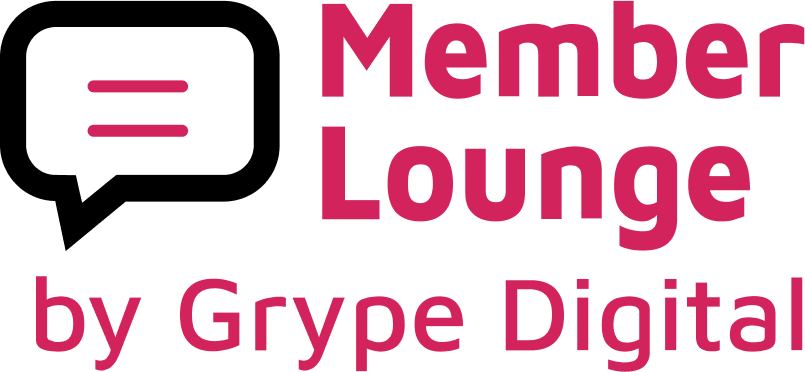Remote work has become increasingly popular post-COVID, and associations need to embrace a strong remote work culture to succeed. In this article, you’ll have a comprehensive understanding of how to build and nurture a thriving remote work culture that will enhance your association’s productivity, member engagement, and overall success.

Understanding Remote Work Culture For Associations
Remote work culture for associations refers to the shared values, practices, and behaviors that shape the work environment and dynamics in a remote setting specifically within associations or nonprofit organizations.
In a good remote work culture, communication, collaboration, and feeling connected are super important. It’s all about building a strong base that helps everyone work well together, stay engaged, and be productive when working remotely.
Challenges in Creating A Remote Work Culture For Your Association
Building a strong remote work culture in associations can be tricky. Here are some challenges you might encounter:
- Making sure everyone communicates well and avoids misunderstandings.
- Creating a sense of connection and belonging despite the physical distance.
- Keeping members and teams accountable and productive.
- Choosing the best tools that will align with your association’s needs
To tackle these challenges, let’s dive into the best practices associations can use to create a solid remote work culture.

Best Practices For Building A Strong Remote Work Culture For Your Association.
1. Establishing Clear Communication Channels
Good communication is essential for a strong remote work culture. It keeps everything running smoothly and helps people work together. It’s all about collaborating, trusting each other, and being on the same page.
When communication is effective, information flows easily, problems get solved, and ideas and feedback are shared. It creates a positive and productive remote work environment for associations.
Now, let’s explore some strategies to establish clear communication in your association.
- Choosing the right communication tools for associations:
When it comes to remote work, picking the right communication tools is key. There are so many options out there, but you should only use the ones that fit your association’s needs.
First, figure out what you actually need. Do you want to chat in real-time? Share and collaborate on files? Something easy for everyone to use? By answering these questions, you’ll be able to choose the best tools for your team.
- Implementing regular team meetings and check-ins:
Regular team meetings and check-ins are a must-have for remote teams. They give everyone a chance to connect, talk about progress, and tackle any issues. To encourage focused collaboration, it’s a good idea to have smaller group meetings and check-ins for specific projects or initiatives. This way, people can provide feedback and support when needed.
- Establish Communication Guidelines and Schedule:
It’s really important to set some guidelines for communication. This way, people know when to expect a response and when someone might be unavailable due to different time zones. Also, think about what schedule works best for your association. Whether it’s daily, every other week, or once a week, choose what suits your association’s culture.
2. Fostering Collaboration and Team Building
When working remotely, it takes some creativity and effort to encourage collaboration and build strong teams. Here are some strategies to help you foster virtual collaboration among association members:
- Utilize collaboration tools: Choose collaboration tools that allow for real-time document editing, file sharing, and task management. Platforms like Google Workspace, Trello, or Asana can help keep everyone organized and facilitate efficient collaboration.
- Establish clear workflows and processes: Define how work will flow between team members and establish clear processes for decision-making, and feedback. This will help promote a structured and organized approach to work.
- Foster open communication: Encourage open and transparent communication channels where team members can freely share ideas, ask questions, and provide feedback. This would help increase your engagement
Promoting Team Work and Synergy:
The following Strategies will help you to promote teamwork and synergy among your association members:
- Set shared goals and objectives: Make sure everyone is aware of the association’s goals that align with its mission. Staying up-to-date promotes teamwork and creates a sense of synergy.
- Encourage collaboration across departments: Give team members from different areas of expertise the chance to work together on projects. This helps share knowledge, brings in diverse perspectives, and strengthens the team dynamic.
- Celebrate achievements and milestones: Recognize and celebrate both individual and team accomplishments. Acknowledging team achievements creates a positive and supportive virtual work environment.
Organizing virtual team-building activities and events
To connect and build relationships among remote team members, virtual team-building activities are a must. If you’re looking for ideas, here are a few:
- Virtual icebreaker games: Kick off meetings with fun activities to get to know each other better. Share stories, play online quizzes, or try virtual scavenger hunts.
- Virtual social events: Plan virtual get-togethers like happy hours, coffee breaks, or game nights. These casual events create opportunities for informal chats, bonding, and personal connections.
- Skill-sharing sessions: Encourage team members to share their expertise or hobbies through virtual sessions. It’s a great way to promote learning, collaboration, and a sense of community within your association.
3. Setting Clear Expectations and Goals
For remote workers to thrive and contribute effectively to associations, it’s crucial to set clear expectations and goals. Here are some tips to do this effectively:
- Clearly define responsibilities: Provide a detailed description of each team member’s role, including the tasks they are accountable for and the deadlines to meet. This helps to establish a framework for accountability, teamwork, and productivity.
- Establish work process guidelines: Define how files should be managed, projects tracked, and time reported. This helps remote workers navigate their tasks and collaborate smoothly.
- Make goals SMART: Ensure goals are specific, measurable, attainable, relevant, and time-bound. This gives remote workers a clear direction to follow.
- Provide regular feedback and evaluations: Set up a system for giving feedback and conducting performance evaluations. Regular check-ins allow for progress discussions, areas of improvement, and recognition of achievements.
- Share written guidelines: Document and share expectations, goals, and milestones in writing. This helps remote workers refer back to them for clarity and consistency.
- Encourage two-way communication: Create an environment where remote workers feel comfortable asking questions, seeking clarification, and providing input on expectations and goals. This promotes understanding and engagement.
4. Encouraging Autonomy and Trust
In remote work environments, it’s important to empower and build trust with your team. Here are some strategies to achieve that:
- Delegate responsibility: Give remote workers meaningful tasks and projects, allowing them to make decisions and take ownership of their work. Show trust in their abilities and let them showcase their skills.
- Provide guidelines and resources: Offer clear guidelines, boundaries, and access to resources that remote workers need to make informed decisions aligned with organizational goals.
- Offer support and mentorship: Be available to guide and support remote workers when they need assistance. Create an environment where they feel comfortable reaching out for help, ensuring they have the necessary support to make effective decisions.
- Communicate openly and transparently: Foster a culture of open communication, where remote workers can freely share ideas, concerns, and progress. Keep them updated on organizational changes and involve them in decision-making.
- Celebrate milestones and successes: Celebrate achievements as a team, whether it’s completing a project or reaching a milestone. Recognize remote workers’ efforts publicly, through virtual announcements or team meetings.
- Offer meaningful rewards and incentives: Consider providing rewards or incentives that matter to remote workers, such as professional development opportunities, flexible work arrangements, or bonuses. Tailor the rewards to their preferences and motivations.
5. Promoting Work-Life Balance
Promoting work-life balance is another very important practice to effectively ensure the well-being and productivity of a strong remote work culture.
The lines between work and personal life can easily blur when the office is not a place you go to every day, and your team may easily struggle to establish clear boundaries between work and personal life due to distractions. Here are some strategies to effectively help your team balance out.
- Flexible work arrangements: Offer flexible work schedules or remote work policies that allow remote workers to adapt their work hours to accommodate personal responsibilities and commitments. This flexibility enables them to find a harmonious balance between work and personal life.
- Clear communication of expectations: Set clear expectations regarding availability and response times to ensure remote workers understand when they are expected to be online and when they can disconnect. This clarity allows them to plan their personal activities accordingly.
- Encouragement of breaks and downtime: Emphasize the importance of taking regular breaks and disconnecting from work. Encourage remote workers to step away from their screens, engage in leisure activities, and prioritize self-care.
- Promote work-life boundaries: Encourage remote workers to establish clear boundaries between work and personal life. Encourage them to create designated workspaces and establish routines that help separate work and personal time.
- Encourage regular exercise and movement: Advocate for regular physical activity by suggesting exercise breaks, stretching routines, or virtual fitness challenges. Physical movement boosts energy levels and improves overall well-being.
6. Leveraging Technology for Remote Work
When it comes to remote work, using technology is super important for smooth collaboration and keeping your team secure. Technology tools and platforms would help you automate your communication, teamwork, member engagement, onboarding, and retention.
Our Member Lounge tool can help you put your association member engagement and retention on autopilot and save you so much time and money. See a Demo Here
Here are other tips that can help you to leverage technology effectively to build a strong remote work culture:
- Choose the right tools: Select collaboration tools that best suit the needs of your remote team. Platforms like Slack, Microsoft Teams, or Trello provide features like chat, file sharing, task management, and virtual collaboration spaces.
- Foster communication and transparency: Utilize these tools to create dedicated channels for different projects or teams. Encourage remote team members to communicate openly, share progress updates, and collaborate effectively using these platforms.
- Secure network connections: Encourage remote workers to use secure and encrypted Wi-Fi networks. Advise them to avoid using public or unsecured networks when handling sensitive information.
- Use secure file-sharing platforms: Implement secure file-sharing platforms that require user authentication and offer encryption options. This ensures that confidential information remains protected.
- Educate remote workers on security practices: Provide guidelines and training on best practices for data security, such as using strong passwords, avoiding phishing scams, and regularly updating software and antivirus programs.
- Engage in continuous learning: Encourage remote team members to pursue online courses, tutorials, and certifications to enhance their technology skills and stay updated. Keep an eye on reputable industry blogs, websites, and publications that cover the latest technology trends and advancements in remote work. Stay informed about emerging tools and practices.
7. Measuring and Evaluating Remote Work Culture
Remote work culture for associations without measuring and evaluating to gauge the effectiveness of the remote work practices and make improvements where needed will be a total waste of time.
Key performance indicators
Key performance indicators (KPIs) provide measurable benchmarks to assess the success of remote work culture. Here are some KPIs to consider:
- Productivity: Measure the output and quality of work completed by remote team members. This can include tracking project completion rates, meeting deadlines, or evaluating client satisfaction.
- Employee Engagement: Assess the level of engagement and satisfaction among remote workers. Consider indicators like employee surveys, feedback sessions, or employee retention rates.
- Communication Effectiveness: Evaluate the quality and efficiency of communication within remote teams. This can be measured through response times, meeting participation, or feedback on collaboration tools.
- Conduct Survey and Feedback Sessions: Surveys and feedback sessions are what you’ll use to identify valuable insights into the experiences of remote team members. Here are tools to conduct them effectively.
- Remote Worker Surveys: Design surveys to gather feedback on remote work experiences, challenges, and suggestions for improvement. Ensure anonymity to encourage honest responses and cover a wide range of topics related to remote work culture.
- One-on-One Feedback Sessions: Schedule individual feedback sessions with remote team members to have open discussions about their experiences and gather personalized insights. This allows for deeper understanding and addressing specific concerns.
- Team Discussions: Organize virtual team meetings or focus groups to encourage open dialogue and brainstorming. Discuss remote work challenges, solutions, and ideas to improve remote work culture collectively.
Analyzing data and making improvements
You should thoroughly analyze the survey responses, feedback, and any collected data. Lookout for patterns, trends, and common themes that emerge to identify areas that need attention or improvement.
Identify the strengths and areas of success in remote work culture, as well as the weaknesses and areas that require improvement.
Implement changes and measure progress based on the insights gained. Monitor the impact of these changes by continuing to measure the identified KPIs and assessing progress over time.
Benefits Of A Strong Remote Work Culture
Now, let’s talk about the perks of having a strong remote work culture and embracing remote work in your association. Here are three key perks
- Flexibility: Remote work enables flexibility, and allows members and employees to have a better work-life balance, as they have more control over their schedules and can eliminate commuting time.
- Access to a wider talent pool: A strong remote work culture opens up access to a wider talent pool. By embracing remote work, associations can recruit and retain talented individuals from anywhere in the world, bringing diverse perspectives and expertise to the table.
- Fosters innovation and clarity: Finally, a remote work culture fosters innovation and creativity. When employees have the freedom to work in environments that suit them best, they can unleash their creativity and come up with innovative solutions to challenges.




